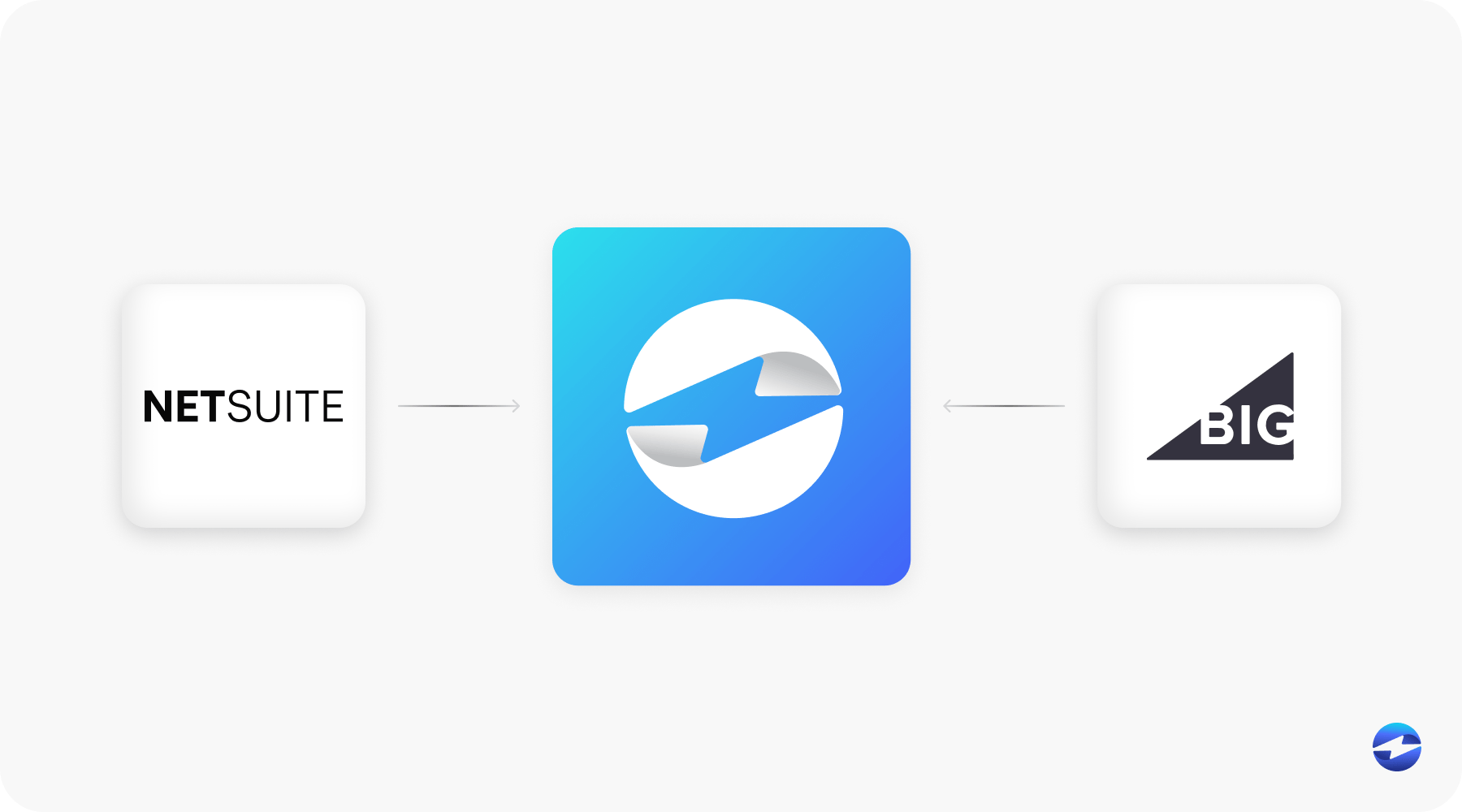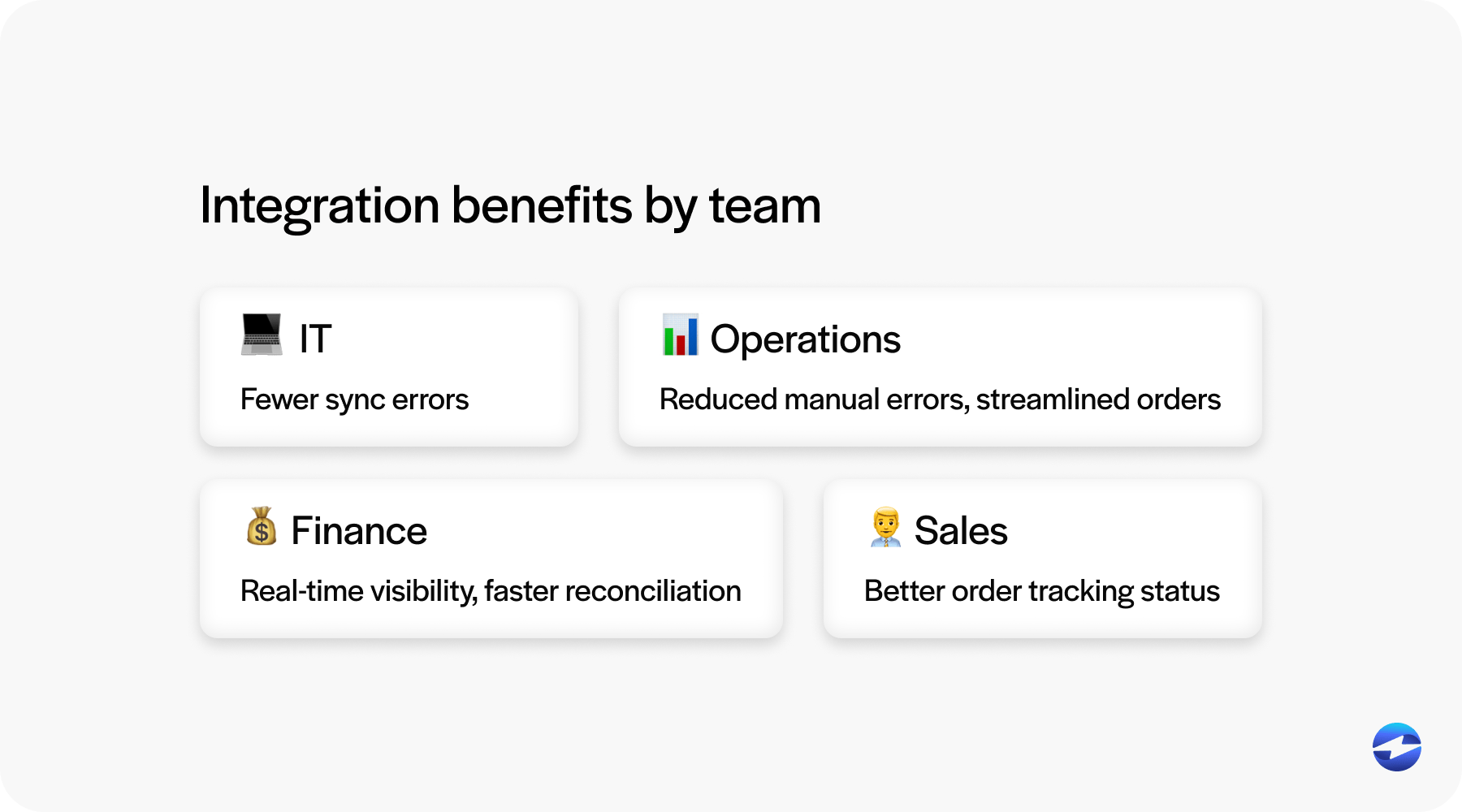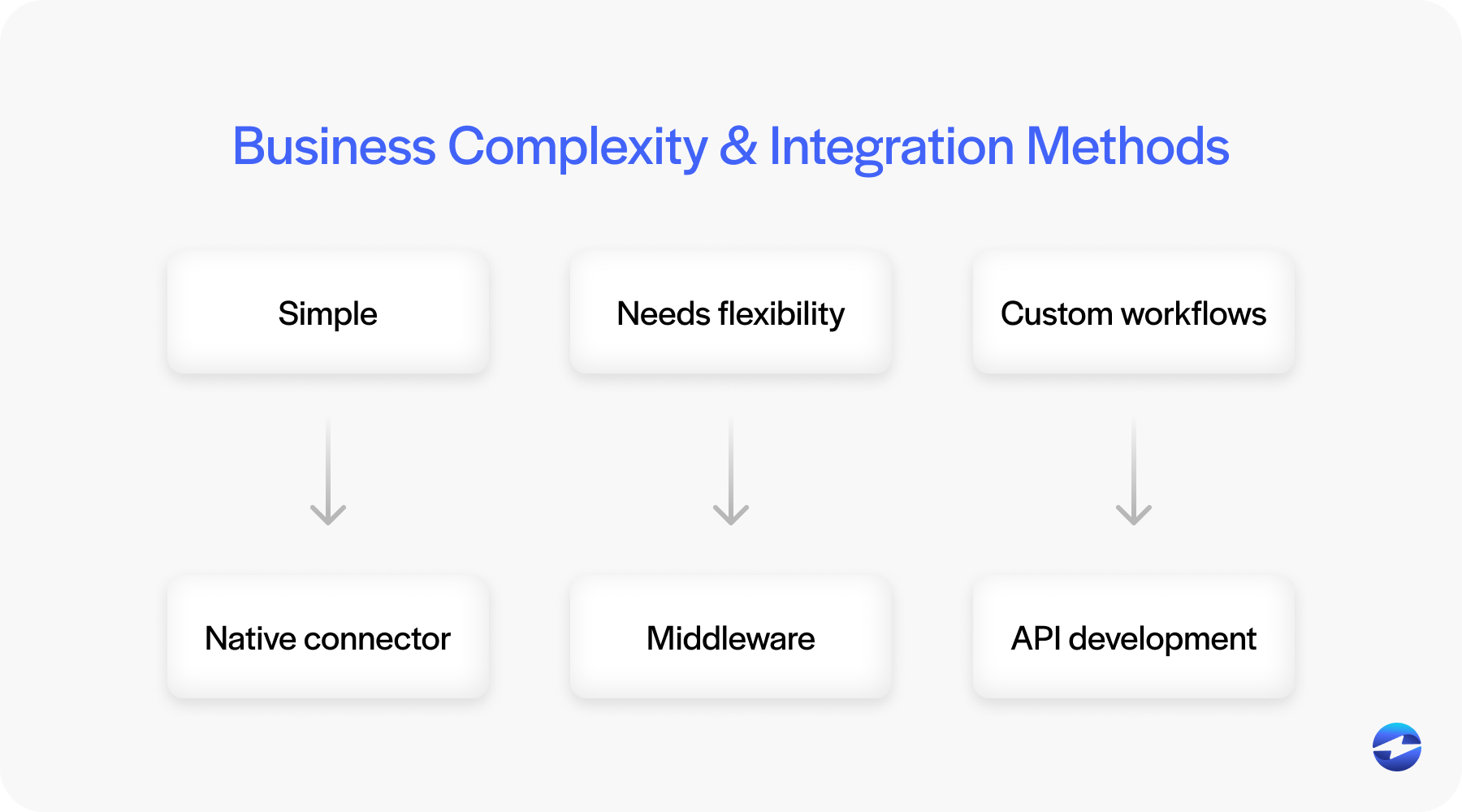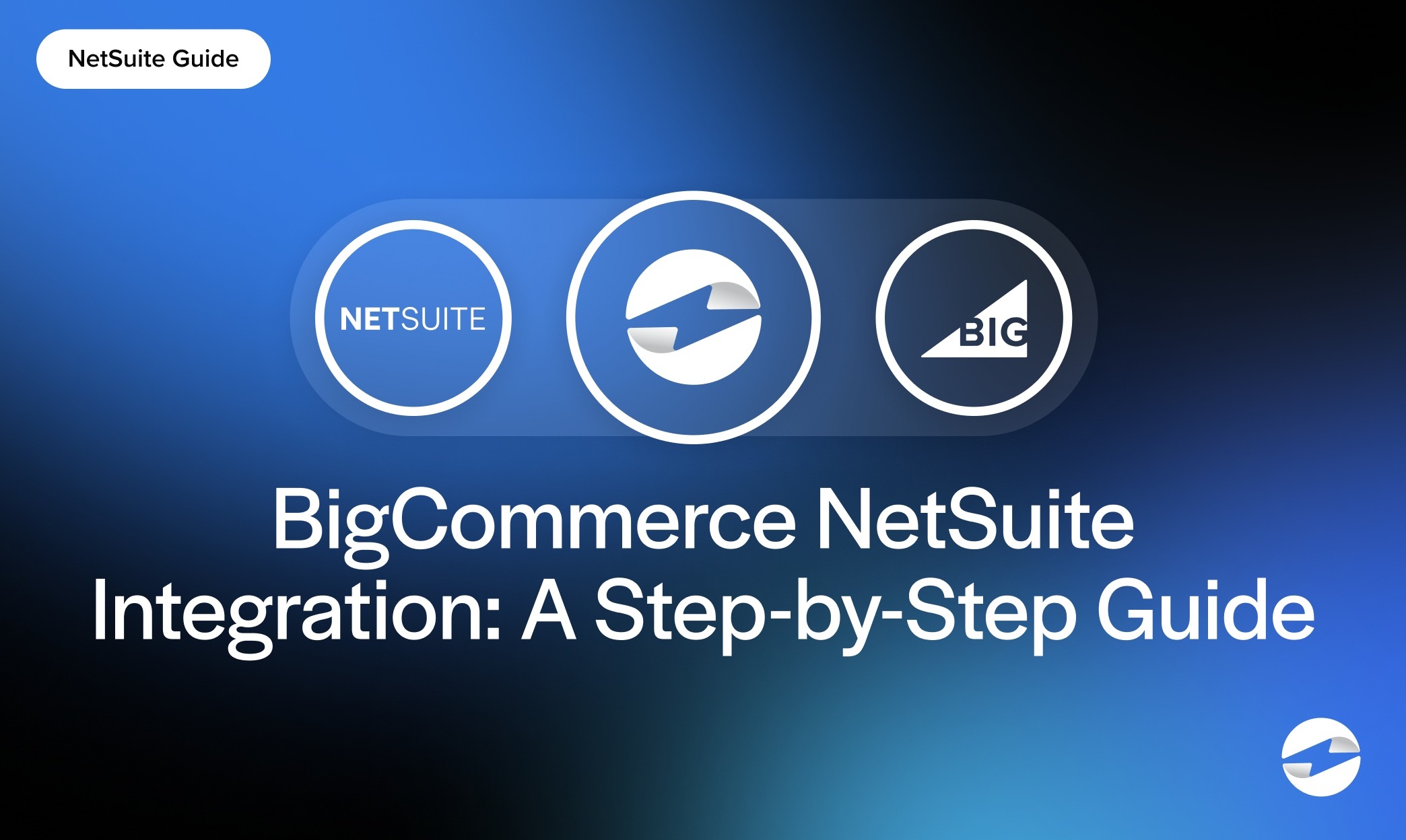Blog > BigCommerce NetSuite Integration: A Step-by-Step Guide
BigCommerce NetSuite Integration: A Step-by-Step Guide
Today’s B2B environment requires operational effectiveness across every touchpoint. And yet most businesses continue to deal with disparate systems that build data silos, create manual workarounds, and are expensive mistakes. When your eCommerce system and ERP system function in silos, you’re essentially managing two businesses—one selling and one that ships, accounts, and handles inventory.
This disconnection becomes extremely painful when companies expand. What began as a manageable manual posting of data between NetSuite and BigCommerce soon became hours of daily reconciliation work, inventory discrepancies, and frustrated customers experiencing order delays. The unseen costs accumulate: employees’ time for data entry, manual errors from procedures, and opportunities lost through misinformed inventory visibility.
For growing B2B companies, the question isn’t how to connect BigCommerce, WooCommerce, or Magento with NetSuite—it’s the best way to do it. A perfect integration strategy makes chaos into efficiency, giving finance teams timely, accurate data and IT administrators the automation they need to propel business growth.
Understanding BigCommerce and NetSuite Integration
BigCommerce has become a leading eCommerce platform that caters to sophisticated B2B needs. In contrast to consumer-focused platforms, BigCommerce offers sophisticated pricing structures, customer-specific catalogs, and bulk ordering capabilities typical of B2B purchasers. The platform can support complex product configurations, custom price levels, and multi-level approval workflows characteristic of business transactions with ease.
NetSuite acts as the business operating base for thousands of growing companies, providing thorough ERP capability that includes financial management, inventory management, order processing, and business intelligence. Its strength lies in creating one integrated picture of business operations, from the very first customer inquiry to final payment and reporting.
Why Integration Is Important

The issue occurs when these strong systems are isolated from each other. Salespeople see real-time BigCommerce data, while the finance department works with NetSuite reports that may be hours or even days behind. Inventory managers struggle to keep inventory current on all sites, leading to overselling or missed sales. Customer service agents spend time stitching together information across multiple systems to respond to basic questions.
Some of the most prevalent pain points include:
- Manual order entry results in bottlenecks and errors
- Inventory discrepancies between systems
- Duplicate customer records are causing confusion
- Late financial reporting due to manual reconciliation
- Price inconsistencies on platforms
Core Benefits of Integration

Operational Efficiency
Integration eliminates burdensome manual processes that drain productivity out of your teams. BigCommerce orders directly import into NetSuite for processing, saving hours of processing time and leaving a mere minutes. NetSuite inventory updates are even reflected on your eCommerce site immediately, eliminating overselling situations that damage customer relationships.
Financial Accuracy
Finance managers and CFOs have end-to-end visibility of sales performance, inventory value, and cash flow in real time. Integration of revenue recognition, cost of goods sold, and automatic inventory adjustments ensures accurate and automatic updates. Real-time financial data facilitates improved decision-making and forecasting.
Scalability and Growth
As your business grows, integrated systems expand with you. The inherent automation of an accurate integration process allows for the processing of larger volumes of orders without proportional increases in administrative costs. This scalability is critical for businesses with high growth rates or sporadic activity patterns.
Improved Customer Experience
Customers benefit from consistent pricing, accurate inventory visibility, and faster order processing. Integration enables such things as real-time tracking of orders and automatic messages that improve satisfaction and reduce support requests.
Key Integration Components
Product Catalog Synchronization
Integrated successfully, your product data remains synchronized across platforms. This includes standard product details, price tiers, inventory levels, and product variations. Advanced synchronization accommodates complicated B2B requirements like customer-specific pricing, bulk pricing, and restricted product access.
Order Management Workflow
The order life cycle is the most important integration point of contact. The BigCommerce orders must pass smoothly to NetSuite with all information required: customer information, product information, price, shipping instructions, and payment status. The integration must accommodate various types of orders, from simple purchases to complex setups involving approval workflows.
Customer Data Management
Customer data synchronization is more than mere contact details. B2B integration must support customer hierarchies, pricing agreements, credit terms, and purchasing restrictions. This one customer view enables a tailored experience with identical data across systems.
Financial Reconciliation
Payment processing integration ensures that financial information flows properly between systems. This is particularly important in configuring out-of-the-box payment options that streamline the entire transaction process from initial quote to ultimate payment and accounting.
Integration Methods and Options

Native Connectors
Both NetSuite and BigCommerce offer native integration capabilities that deal with the most frequent synchronization needs. The native connectors are appropriate for straightforward implementations but may be too simplistic for highly personalized B2B processes.
Third-Party Middleware
More robust integration platforms employ better mapping features, exception handling, and monitoring. A majority of them have pre-designed templates for standard integration use cases and can be tailored based on need.
Custom API Development
BigCommerce or NetSuite could require custom development where the organization desires very specific requirements. It offers maximum flexibility but can be accomplished only by highly skilled individuals on both sides and is governed subsequently.
Contemporary payment processing platforms natively integrate into eCommerce and ERP systems, which creates smooth financial processes. Embedded payment solutions remove most manual reconciliation processes while offering improved security and compliance functionality.
Implementation Best Practices
Planning and Preparation
Effective integration starts with the proper planning and business process analysis. Map your existing workflows to determine automation potential and potential roadblocks. Establish data governance policies to maintain a consistent quality of information across systems.
Critical planning tasks are:
- Documenting business processes as they currently operate
- Defining data mapping requirements
- Establishing integration performance metrics
- Creating rollback procedures for unexpected issues
Phased Rollout Strategy
Integrate incrementally to minimize business disruption. Start with basic product and customer synchronization and proceed to add sophisticated workflows like automated order processing or advanced financial reconciliation.
Data Quality Management
Clean and consistent data is central to successful integration. Implement data quality rules and validation rules before initiating the integration process. Data audits on a regular basis guarantee long-term integration accuracy.
Testing and Validation
Comprehensive testing guarantees integration dependability when going live. Test in several scenarios like high-volume times, errors, and edge case scenarios that might occur in real-time operations.
Common Integration Challenges
Data Mapping Complexities
Different field structures and data formats are used by various systems. Overcome these challenges through accurate documentation of transformations and mapping rules that automatically transform data.
Real-Time vs. Batch Synchronization
Choose the frequency of synchronization based on business requirements and system constraints. Real-time updates provide immediate accuracy but may impact system performance, while batch processing is optimized for batch operations.
Monitoring and Error Handling
Robust integration features extensive error checking and notification processes. Monitoring is implemented automatically, and it alerts administrators to integration issues before they impact business processes.
Scalability Considerations
Design integration architecture to be expandable for future growth in transaction volume and system complexity. Consider the heavy load performance of the integration and plan capacity additions.
Payment Processing Alignment
Implement payment processing processes that are both eCommerce and ERP compatible. Modern embedded payment solutions facilitate such compatibility more easily through native integration capabilities on both sides.
Measuring Integration ROI
Efficiency and Cost Savings
Compute the time reduction resulting from automated processes by tracking such as order process time, inventory refresh frequency, and data entry requirements. The majority of companies experience a 60-80% reduction in manual data entry once properly integrated.
Error Reduction
Measure the accuracy of integration with metrics like order accuracy rates, inventory discrepancy events, and customer service requests for data consistency.
Financial Impact
Measure improvement in cash flow timing, reporting quality, and financial close processes. Organizations usually achieve 25-50% decreases in month-end close time when implementing full-scale integration.
Customer Satisfaction Improvements
Measure improvement in customer experience with metrics like the order fulfillment speed, accuracy rates, and support tickets for order status requests.
Future-Proofing Your Integration
Technology Evolution
Stay current with platform advancements and new integration capabilities. Both BigCommerce and NetSuite regularly introduce new capabilities that can be utilized to extend integration functionality.
Business Growth Considerations
Plan integration architecture for future business expansion, including new products, new sales channels, and international operations.
Emerging Technologies
Consider how emerging technologies like artificial intelligence, machine learning, and advanced analytics will further enhance integration ability. These technologies can enable predictive analytics and automated optimization that make operations even more efficient.
The Role of Embedded Payments
Embedded payment solutions are transforming the manner in which companies handle financial transactions. By integrating payment processing directly into business procedures, these solutions eliminate a great deal of the old reconciliation headache while providing enhanced security and compliance features.
Planning Your Integration Strategy
BigCommerce-NetSuite integration is more than a technical challenge—it’s a strategic initiative that has the potential to transform your business operations. An effective integration strategy eliminates operational roadblocks, maintains data integrity, and provides the foundation for scalable growth.
Getting Started
Begin by putting down your current workflows and identifying major pain points that integration needs to address. Engage stakeholders from sales, finance, operations, and IT to get comprehensive requirements gathering. Think about collaborating with integration specialists who understand both platforms and can guide you through the difficult decisions of building a solid integration plan.
Partner Selection Criteria
Choose integration partners based on their expertise in both NetSuite and BigCommerce, their understanding of your industry requirements, and their ability to provide sustained support. Choose partners who have the ability to provide embedded payment solutions that further streamline your finance processes.
The investment price of effective integration pays returns in increased efficiency, improved customer experience, and the operational foundation necessary to drive sustainable business growth. In a competitive age, companies that successfully integrate their eCommerce and ERP operations gain critical ground on businesses that still struggle with standalone operations.

